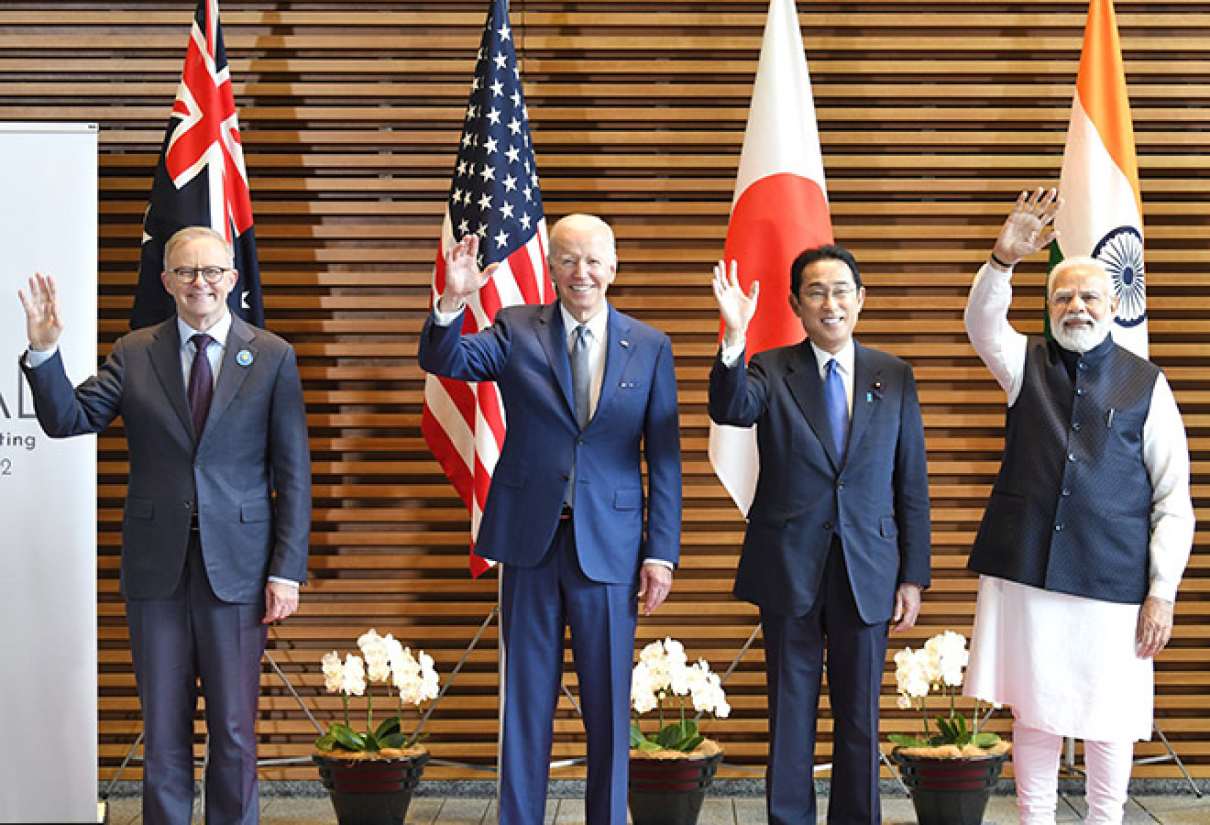The International Institute for Strategic Studies (IISS) organized the Shangri-La meeting on June 2-4 in Singapore. It is a unique platform where ministers debate the region’s most pressing security challenges, engage in important bilateral talks, and develop fresh approaches together.
Guilty Conscience
Taking a cue from how China looks at the Quad, some analysts think that the objectives of the Quad-4 are hazy.
China has always sought to interpret Quad’s statements according to its perceptions but not pragmatically. For example, when American Defense Secretary Lloyd Austin says, “We seek a region where no country dominates, and no country is dominated — one where all countries are free from coercion…” China jumps to the conclusion that it is aimed at it.
Again, China argues that Australia is the only Quad member, a genuine geographic Indo-Pacific country bordering both oceans. Beijing asks what the basis of the US’ claim to be an “Indo” country is. Is it because the UK currently controls its military base in Diego Garcia? Many African countries border the Indian Ocean. That does not make them “Pacific” countries.
India is not a Pacific country, and Japan is not an Indo state. The US has created this fuzzy Indo-Pacific concept by grouping countries at the extreme edge of the region in its strategy to surround China.
The US has security interests and military bases in the area and deploys its military there. By this definition, the US is a global country. This is China’s view of the Quad.
Putting it succinctly, China’s line of argument is that Quad-4 is a fuzzy group of countries the US has brought together in its strategy to surround China; or, in other words, response to China’s “Necklace of Pearls” concept.
Quad Pragmatism
The Quad-4 is evolving and expanding to be renamed Quad Plus. Why are more countries eager to join it, particularly in the South East Asian region? The mercantile and strategic importance of the Indo-Pacific region is a big attraction for smaller and island countries to think positively about the Quad–4.

Moreover, the aggressive Chinese posture towards Taiwan, frequent muscle flexing, repeated threatening jet flights in the skies of these small countries, and the movement of warships and carriers in the Indian Ocean and the Eastern Coast of Africa, all reflect China’s ulterior designs in the Indo-Pacific region.
China indicates that it aspires to dominate the world and create socialist imperialism, which could be worse than capitalist imperialism.
There is no justification for accusing the Quad-4 members of any ambiguity in the organization’s objectives.
The May 20 statement of the US cannot be clearer as it said, “The core intent of the Quad is to maintain a free and open Indo-Pacific and uphold the rules-based international order.”
We know that three-fourths of the total trade of the world flows through the Strait of Malacca, which explains the strategic importance of the Indo-Pacific.
The rise of military and economic power within the Indo-Pacific does not give it the right to call itself the policeman of the region or to behave like a gendarmerie and keep a suspicious watch over the mercantile activities of stakeholders.
Roots Of Quad
The code of the international system to which Washington refers has indeed been built and dominated by the US and its Western allies in a way that many benefits accrue to them.
Rising China has been behaving in a belligerent manner making Taiwan a scapegoat of sorts. The US and other partners who have stakes in maritime commerce in the Indo-Pacific consider it their right to protect their interests in the region.
Their concerns essentially emanate from Beijing’s hegemony and insolence. To quote Mark Valencia (South China Morning Post of June 14), they hope to deter China’s nefarious designs by “coordinating their strategy to constrain, contain and, if necessary, confront China.”
Conclusion
We cannot understand some analysts’ argument that the Quad’s objectives are hazy. The Quad-4 has no intention of encircling or constraining China, but it will not allow any hegemonic assertions in the region that would jeopardize peace and stability.
This is very clear, and any speculation in this regard will be erroneous. Quad has adhered to international law, mainly in the UN Convention on the “Law of the Sea” or UNCLOS.

However, it is essential to note that the US would not want to walk roughshod on the dynamics of the history of international relations, such as between India and Russia or Japan and India.
This factor is now reflected in the inclusion of the agenda of cooperation on non-traditional security issues like climate change, disaster control, pandemics, infrastructure, cyber and maritime safety, etc.
Such non-traditional security issues legitimize countries like India, Japan, and Australia as active members. But India’s non-alignment policy, its different worldview, and Japan’s constitutional constraint against deploying offensive weapons have slowed down the pace of Quad’s evolution toward a hardcore security arrangement.
Australia, too, has to be considerate because of the significance of its trade relations with China. The cumulative effect of all these measures reflects Quad’s creative and defensive potential depending on how China behaves in the totality of things.
Keen observers have also marked that Japan and India are almost on the brink of changing their political tune in response to an increasingly aggressive China.
While Beijing has been protracting Sino-India border talks in Ladakh for more than a year, it has also enormously increased its military built up close to the LAC with India.
This explains the considerable significance attached to the visit of Indian Prime Minister Modi to Washington, which vowed strong bilateral and military cooperation between the two countries.
- KN Pandita (Padma Shri) is the former Director of the Center of Central Asian Studies at Kashmir University. Views expressed here are of the author’s.
- Mail EurAsian Times at etdesk(at)eurasiantimes.com
- Follow EurAsian Times on Google News




